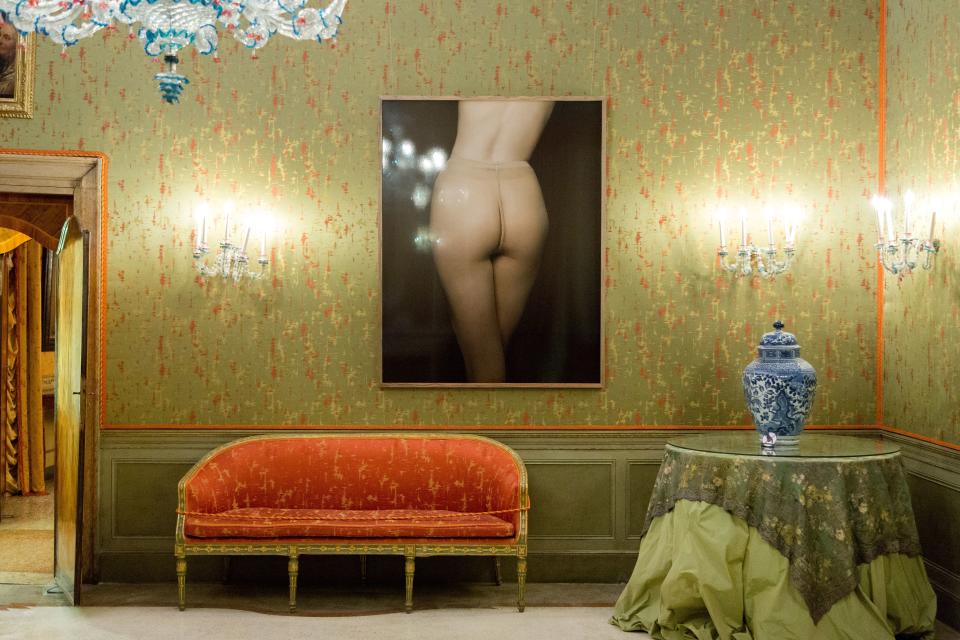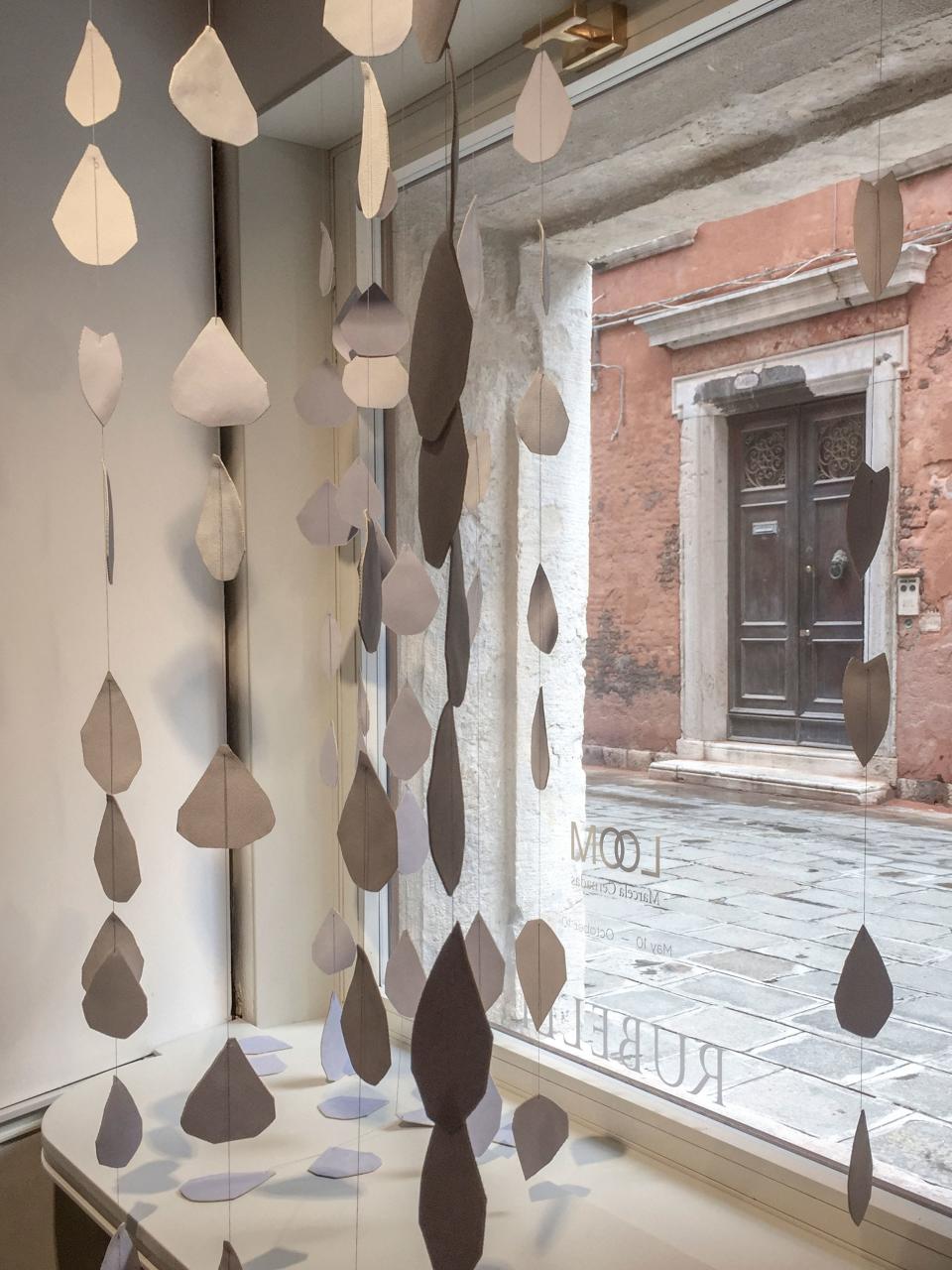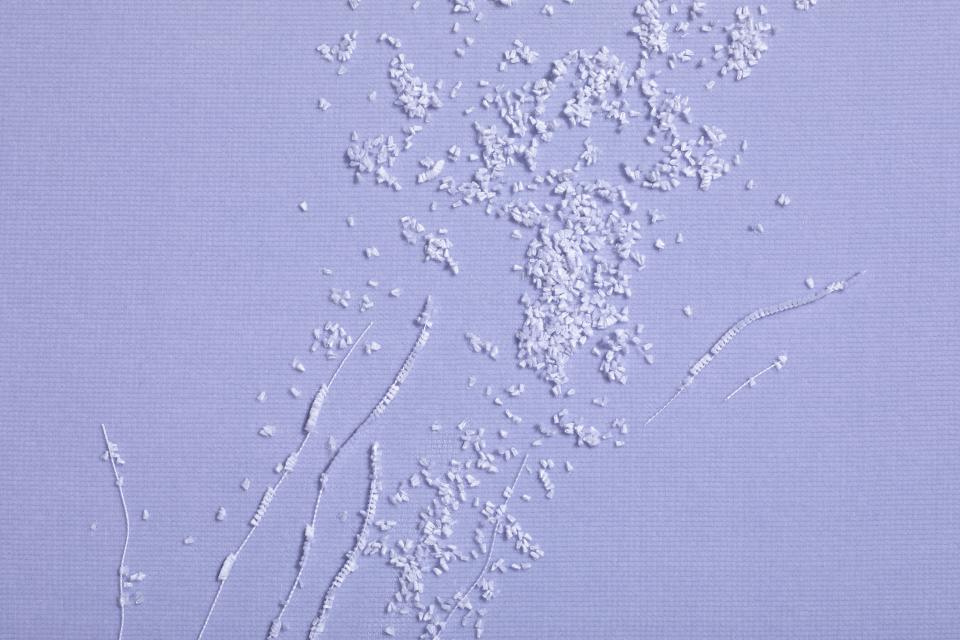Rubelli Partners with Two Contemporary Artists for Its Venice Biennale Projects
Beyond its international roster of artists and galleries, the Venice Biennale is a major point of pride for local talents who have maintained the floating city’s artistic heritage for centuries. World-renowned Italian companies like Fortuny and Rubelli are reminders of Venice’s roots as a center of trade, luxurious textile production, and commercial innovation. While Fortuny revisits its family’s story in an exhibition coinciding with the 2019 Biennale, Rubelli merges past and present by collaborating with two contemporary artists: Marcela Cernadas and Brigitte Niedermair.
For her exhibition, “Brigitte Niedermair. Me and Fashion,” curated by Charlotte Cotton at the Museum of Palazzo Mocenigo, Niedermair took inspiration from the building itself. To create a dialogue within the palazzo’s opulent interiors, Niedermair replaced certain works from Mocenigo’s collection with more than 30 of her cutting-edge photographs, including those from her legendary Dior campaigns. “The history of the palazzo—and history at large—were written mostly by men, so it was important for me to rewrite the space’s past,” explains Niedermair, who is based in Merano, a small town in northern Italy. In the exhibition, only 17th- and 18th-century women directly confront the viewer, whereas Niedermair’s portraits obscure the face in favor of emphasizing the body’s sensual contours.

Rubelli, who provided Palazzo Mocenigo’s textiles and upholstery for its 2013 renovation, created the exhibition’s showstopping entrance piece: a six-by-eight-meter silk lampas tapestry featuring the artist’s photograph of a flame emerging from a woman’s lips, shot for Dior magazine. Mammoth, luminous, and seductive, it is the ultimate contrast from the aristocratic male portrait that would typically greet guests when entering a palazzo.
The second exhibition, “Marcela Cernadas: Loom,” organized with Galleria Michela Rizzo, is located at Ca’ Pisani Rubelli, a 14-century gothic palazzo acquired by the Rubelli family in the mid-18th century, which now serves as the company’s showroom. During the summer of 2018, Ca’ Pisani Rubelli began displaying its 7,000-piece historic textile archive in smaller rotating exhibitions, which can be visited by appointment. The current selections highlight the archive’s influence on contemporary fabrics for companies like Tiffany & Co. and Armani, as well as Rubelli’s rich history with the Venice Biennale. “Rubelli has kept an eye on art since the beginning,” Nicolò Favaretto Rubelli tells AD PRO. He and his brother Andrea are Rubelli’s co-CEOs. “Our strong Venetian soul has always made us open to the contemporary art scene,” he says.

Illustrating Rubelli’s synergy between textiles and art, Cernadas’s “Loom” approaches weaving as a metaphor for life. “In Italian, ‘telaio’ means both ‘loom’ and ‘frame,’ so through my title, I propose a double evocation of the main tool for weaving and of the surface that determines the boundaries of painting,” the Argentinian artist explains. From a distance, Cernadas’s works appear like petite Agnes Martin paintings. Upon closer inspection, one realizes her canvas is actually Rubelli’s lavender-gray Velvetforty textile, and that strategic tears in the weave have created the illusion of impasto. Surrounding these three mounted works are spools of thread and small petals of the same material, which line the showroom’s furniture and wooden beam ceiling.

“Rubelli’s team is constantly looking to combine new technologies with historical knowledge to bring artists’ ideas to life,” Favaretto Rubelli says of the company’s collaborations, past and present. “Art is education. It’s an instrument that can reflect moral and social dynamics.” Imbuing their beautiful creations with poignant commentary on current affairs and the human psyche, Cernadas’s and Niedermair’s works do just that.
“Brigitte Niedermair. Me and Fashion” will be on view through November 24, 2019, at the Museum of Palazzo Mocenigo, San Croce, 1992. “Marcela Cernadas: Loom” will be on view through October 10, 2019, at Ca’ Pisani Rubelli, S. Marco, 3393.
Originally Appeared on Architectural Digest

